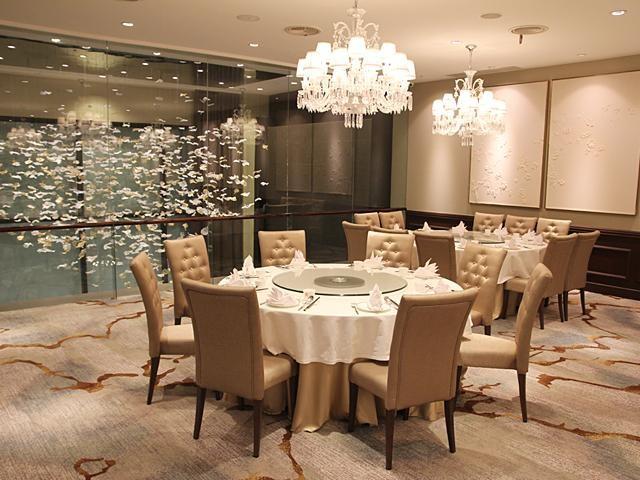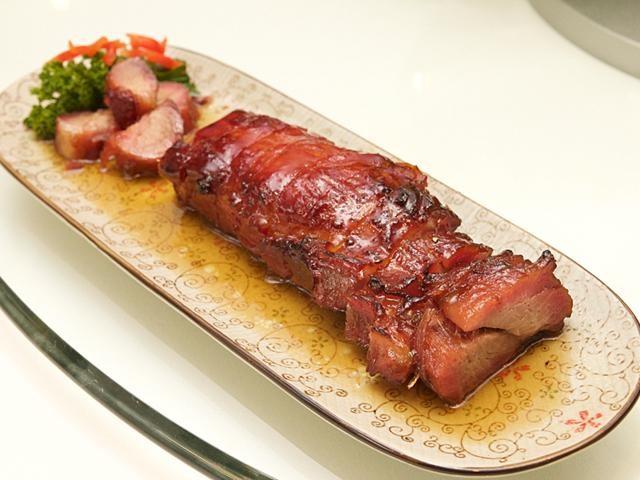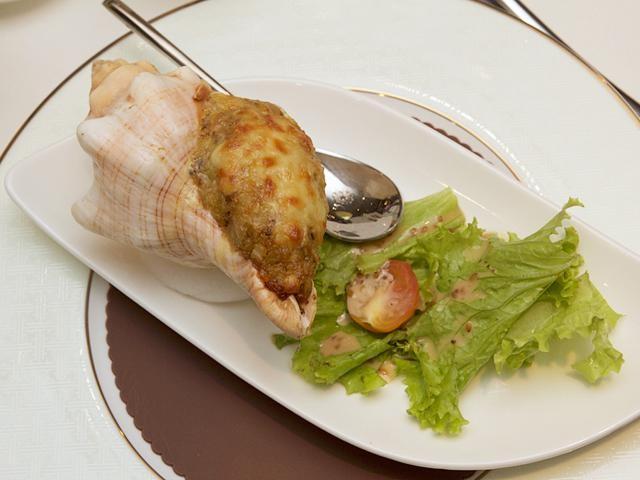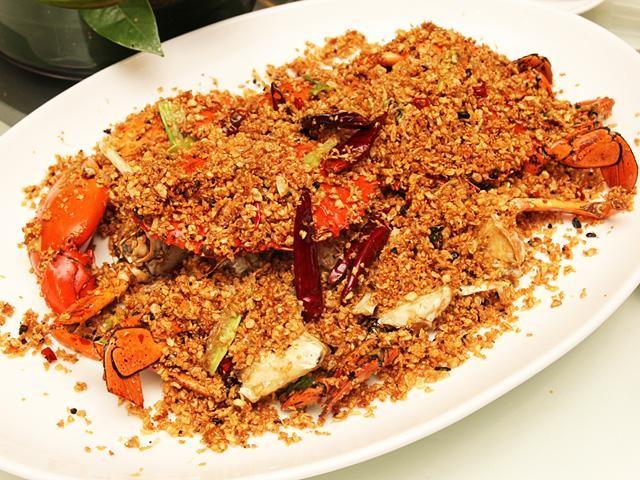The new must-try in Greenhills: Xiù Fine Cantonese Dining

For some strange and unrelated reason, President Rodrigo Duterte’s first State of the Nation Address (SONA) ended just as the vehicle I was riding pulled up to the entrance of the building housing Xiù (shyow) Fine Cantonese Dining restaurant.
Like DU30’s speech to the Filipinos, Xiù’s managing director Andrew Y. Dee served lot of stories and side comments to keep us entertained and informed all night as he played host to our table.
From the etymology of Xiù (elegance in Chinese) to why the honey-glazed prime cut char siu (asado) was cut thick (and joking where to go if we had complaints about the food), Dee kept our table buzzing and munching for the whole three-hour, 14-course Chinese banquet.
The answer to the first question was simple: Because of the quality of the pork, Xiù’s Cantonese chefs wanted the diners to fully taste the tenderness and juiciness of the prime cut pork, as well as the perfect marbling, quality preparation, and their signature roasting techniques.
The same can be said for the second course, Cantonese-style crispy pork belly.
More popularly known as lechon, or lechon Macau, the crispy pork belly is made even tastier with the house-blend, mustard-based sauce served on the side. Most fine dining Chinese restaurants pair these two dishes with slices of century egg, soy or roast chicken, and jellyfish, but I was glad that both melt-in-your-mouth pork items got solo acts because they are the perfect starters.

Soup of the night was double-boiled fish maw (air or gas bladder) and almond soup, one of Xiù’s specialities that is rich in protein, collagen, complex carbohydrates, but contains very little fat. Essence of chicken, fish, herbs, and spices are concentrated and infused into the almond soup.
Because the meat have dried up and lost their tastes, only the white-colored soup is served to diners. Rich, savory, yet not as heavy as cream-based soups, the dish did not need any toppings or additional seasonings to enhance its flavor, and was good to the last drop.
Sea conch and cheese
Two unusual ingredients: sea conch, a sea snail served with its shell, and baked cheese started off the first of nine main courses for the evening’s lauriat. Chopped and combined with rice and curry, I could hardly taste the sea conch, which was actually a good thing. The baked cheese on top gives the dish an ooey-gooey, nutty crust, while the side salad gives some needed acidic balance.
The dish does not necessarily scream: “order me!” but can be an option for food adventurers who want to try something new.

The stewed US beef short ribs meanwhile is something more familiar to the Pinoy palate. Rich, moist, and tender, what the dish really needed was a cup of rice or some kind of bread or bun to wipe off the amazing meat and sauce. Topping the meat with chopped spring onions only made each bite of beef more delicious.
The pièce de résistance visually, and in terms of rarity and price, was the Baked tiger lobster with cheese. Served with its severed head and tail, the lobster meat was made more luxurious by the melted cheese sauce. It is, however, tougher than the rock lobsters and other lobster varieties I had before.
We were already adjusting our belts and pants by the time the fourth main course arrived, Steamed Lapu-lapu, traditional-style. Served deboned and cut into portions, this is perhaps one of the dishes that most Pinoys already know. Caught live from the aquariums located at the entrance, most diners will go for the filleted body, but as I learned from my elders, the real flavor is in meat found in the cheeks and the mouth/jaw.
Familiar dishes
The next two dishes are also familiar in terms of look and taste to the casual Pinoy diner: Premium soy sauce Hong Kong chicken in clay pot uses yellow chicken prepared in a way that is similar to adobo, while Xiù elevates the ordinary Sweet and Sour Pork to a new level. Made with the usual pineapple, bell pepper, and tangy sauce, what sets their version apart is the crunchy exterior of the meat; Dee proudly stated that the pork will retain the crispiness for hours.
Xiù’s four-storey building, with three floors for dining and the whole basement for preparation and kitchen operations, uses dumbwaiters to transport the food. In fact, the next dish, a light combination of Chinese lettuce with shrimp paste in clay pot, is only cooked half-way. The rest of the cooking time happens when it is transported to the dining area, and mixed table side.
The familiar fishy but pleasant, bagoong aroma will envelop the room, while the saltiness of the fish paste lends the dish a savory and earthy taste.
The lettuce dish was actually the perfect intermission for the next main course, Wok-fried crab with garlic, “Typhoon Shelter” style. Despite eating at a fine-dining establishment, there was no way for anyone to eat the crabs served with lots of chopped garlic using spoons and forks.

The juicy meat goes really well with the garlic bits, I only wished that the crabs were bigger and fatter. Rice is traditionally served last, just before the dessert, as a insurance that the guests will go home with full stomachs. Baked black ink rice with seafood in clay pot looks plain when it was served and one needs to look at the bottom for the black-tinted rice. Topping the bowls of black rice with the leftover garlic bits from the Typhoon shelter crab was instantly the best idea of the night.
Simpler desserts
Like most Chinese lauriats, dessert was a bit muted and pedestrian compared to the main dishes. The Longevity balls look and taste like giant versions of buchi without the lotus or mung bean filling, while the Hot red bean soup capped off the night’s meal.
Just in case you were wondering where Dee jokingly said we should go if we had complaints, the answer was in nearby Camp Crame. — AT, GMA News
Xiù Fine Cantonese Dining is located at 115 Connecticut Street, Northeast Greenhills, San Juan City.




